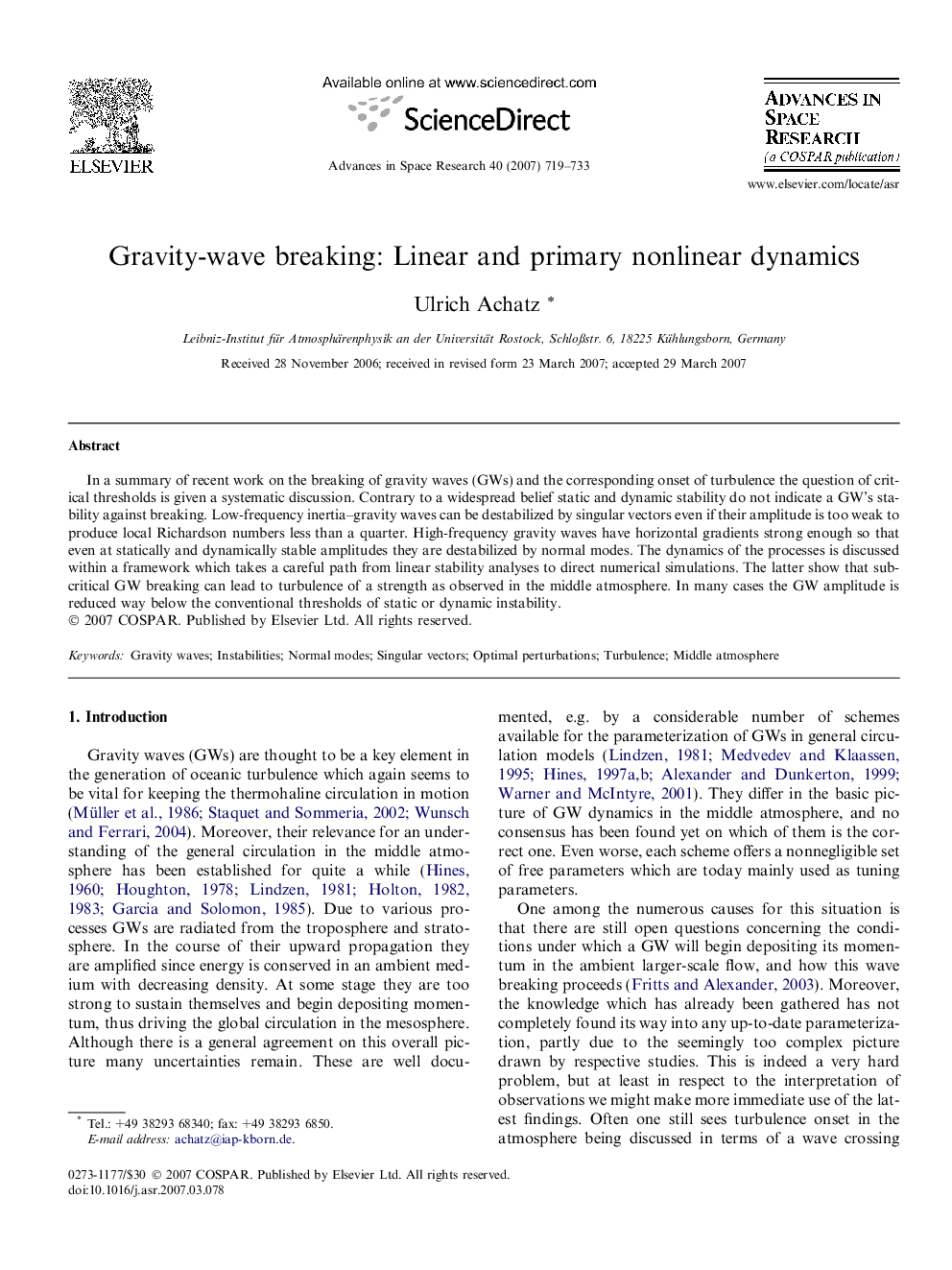| Article ID | Journal | Published Year | Pages | File Type |
|---|---|---|---|---|
| 1768869 | Advances in Space Research | 2007 | 15 Pages |
Abstract
In a summary of recent work on the breaking of gravity waves (GWs) and the corresponding onset of turbulence the question of critical thresholds is given a systematic discussion. Contrary to a widespread belief static and dynamic stability do not indicate a GW's stability against breaking. Low-frequency inertia-gravity waves can be destabilized by singular vectors even if their amplitude is too weak to produce local Richardson numbers less than a quarter. High-frequency gravity waves have horizontal gradients strong enough so that even at statically and dynamically stable amplitudes they are destabilized by normal modes. The dynamics of the processes is discussed within a framework which takes a careful path from linear stability analyses to direct numerical simulations. The latter show that subcritical GW breaking can lead to turbulence of a strength as observed in the middle atmosphere. In many cases the GW amplitude is reduced way below the conventional thresholds of static or dynamic instability.
Keywords
Related Topics
Physical Sciences and Engineering
Earth and Planetary Sciences
Space and Planetary Science
Authors
Ulrich Achatz,
